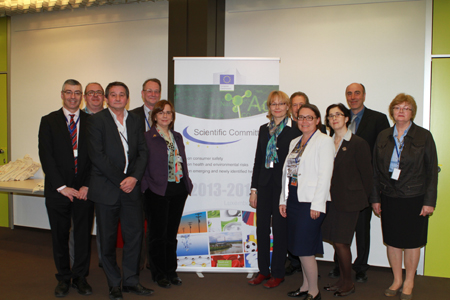Ecotoxicity and uptake of polymer coated gold nanoparticles
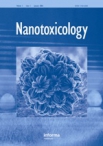 Bioconjugated gold nanoparticles (Au NPs) are a promising tool for pharmaceutical applications. However, the ecotoxicity of these types of NPs has hardly been studied. We investigated the ecotoxicity and uptake of 4-5 nm Au NPs to which two types of polymer coatings were attached. One coating was an amphiphilic polymer only and the other an amphiphilic coating to which 10 kDa polyethylene glycol chains were attached. In both 72 h algal growth inhibition tests with the alga Pseudokirchneriella subcapitata and in 24 h resazurin cytotoxicity tests with the rainbow trout gill cell line RTGill-W1, the pegylated Au NPs were found less toxic compared to the amphiphilic coated particles. No uptake or direct interaction between particles and algal cells was observed. However, uptake/adsorption in fish gill cells reached up to >10(6) particles/cell after 1 h and particles were eliminated for ≥96% after 24 h depuration. Both particle types were found within membrane enclosed vesicles in the cytoplasm of RTgill-W1 cells.
Bioconjugated gold nanoparticles (Au NPs) are a promising tool for pharmaceutical applications. However, the ecotoxicity of these types of NPs has hardly been studied. We investigated the ecotoxicity and uptake of 4-5 nm Au NPs to which two types of polymer coatings were attached. One coating was an amphiphilic polymer only and the other an amphiphilic coating to which 10 kDa polyethylene glycol chains were attached. In both 72 h algal growth inhibition tests with the alga Pseudokirchneriella subcapitata and in 24 h resazurin cytotoxicity tests with the rainbow trout gill cell line RTGill-W1, the pegylated Au NPs were found less toxic compared to the amphiphilic coated particles. No uptake or direct interaction between particles and algal cells was observed. However, uptake/adsorption in fish gill cells reached up to >10(6) particles/cell after 1 h and particles were eliminated for ≥96% after 24 h depuration. Both particle types were found within membrane enclosed vesicles in the cytoplasm of RTgill-W1 cells.


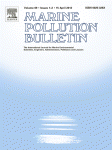 Knowledge on the effects of pharmaceuticals on aquatic marine ecosystems is limited. The aim of this study was therefore to establish the effect thresholds of pharmaceutical compounds occurring in the Belgian marine environment for the marine diatom Phaeodactylum tricornutum, and subsequently perform an environmental risk assessment for these substances. Additionally, a screening-level risk assessment was performed for the pharmaceutical mixtures.
Knowledge on the effects of pharmaceuticals on aquatic marine ecosystems is limited. The aim of this study was therefore to establish the effect thresholds of pharmaceutical compounds occurring in the Belgian marine environment for the marine diatom Phaeodactylum tricornutum, and subsequently perform an environmental risk assessment for these substances. Additionally, a screening-level risk assessment was performed for the pharmaceutical mixtures. 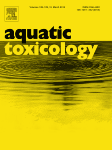 In this paper, the non-target effects of tebufenozide were evaluated on the estuarine crustacean, the opposum shrimp Neomysis integer (Leach, 1814). Tebufenozide is a synthetic non-steroidal ecdysone agonist insecticide and regarded as potential endocrine-disrupting chemical (EDC). N. integer is the most used crustacean in ecotoxicological research in parallel to Daphnia sp. and has been proposed for the regulatory testing of potential EDCs in the US, Europe and Japan.
In this paper, the non-target effects of tebufenozide were evaluated on the estuarine crustacean, the opposum shrimp Neomysis integer (Leach, 1814). Tebufenozide is a synthetic non-steroidal ecdysone agonist insecticide and regarded as potential endocrine-disrupting chemical (EDC). N. integer is the most used crustacean in ecotoxicological research in parallel to Daphnia sp. and has been proposed for the regulatory testing of potential EDCs in the US, Europe and Japan. 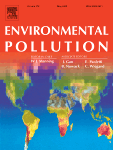 Our lab has a long history of metal bioavailability research. Here, the results of previous terrestrial studies performed by our lab was used and integrated with other datasets to develop a general biovailability model for copper. The free ion approach has been previously used to calculate critical limit concentrations for soil metals based on point estimates of toxicity. In this study, the approach was applied to dose–response data for copper effects on seven biological endpoints in each of 19 European soils. The approach was applied using the concept of an effective dose, comprising a function of the concentrations of free copper and 'protective' major cations, including H+. A significant influence of H+ on the toxicity of Cu2+ was found, while the effects of other cations were inconsistent. The model could be generalised by forcing the effect of H+ and the slope of the dose–response relationship to be equal for all endpoints. This suggests the possibility of a general bioavailability model for copper effects on organisms. Furthermore, the possibility of such a model could be explored for other cationic metals such as nickel, zinc, cadmium and lead.
Our lab has a long history of metal bioavailability research. Here, the results of previous terrestrial studies performed by our lab was used and integrated with other datasets to develop a general biovailability model for copper. The free ion approach has been previously used to calculate critical limit concentrations for soil metals based on point estimates of toxicity. In this study, the approach was applied to dose–response data for copper effects on seven biological endpoints in each of 19 European soils. The approach was applied using the concept of an effective dose, comprising a function of the concentrations of free copper and 'protective' major cations, including H+. A significant influence of H+ on the toxicity of Cu2+ was found, while the effects of other cations were inconsistent. The model could be generalised by forcing the effect of H+ and the slope of the dose–response relationship to be equal for all endpoints. This suggests the possibility of a general bioavailability model for copper effects on organisms. Furthermore, the possibility of such a model could be explored for other cationic metals such as nickel, zinc, cadmium and lead.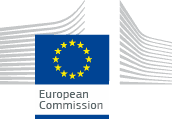 On 11 and 12 April 2013, the first meeting of the newly appointed EU Scientific Committee SCHER took place in Luxembourg. After a rigorous selection procedure - i.e. there were more than 400 candidates - based on criteria such as scientific excellence and independence, Prof. Janssen was appointed as one of the 11 members of SCHER (Scientific Committee on Health and Environmental Risks). Committee members are appointed for a three-year term and will provide the Commission with independent scientific advice on issues relating to consumer safety, public health and the environment. Following his appointment Prof. Janssen was then elected by SCHER members to serve as Chair of the Committee.
On 11 and 12 April 2013, the first meeting of the newly appointed EU Scientific Committee SCHER took place in Luxembourg. After a rigorous selection procedure - i.e. there were more than 400 candidates - based on criteria such as scientific excellence and independence, Prof. Janssen was appointed as one of the 11 members of SCHER (Scientific Committee on Health and Environmental Risks). Committee members are appointed for a three-year term and will provide the Commission with independent scientific advice on issues relating to consumer safety, public health and the environment. Following his appointment Prof. Janssen was then elected by SCHER members to serve as Chair of the Committee. 